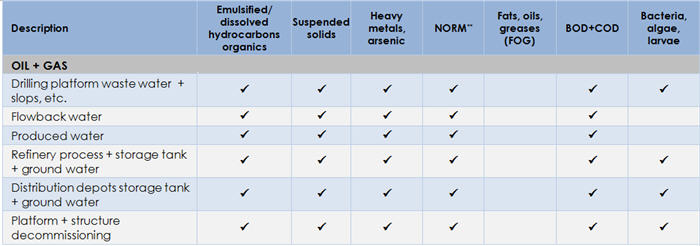Innovation In Applying Existing Technology Solutions
By Julie King
A long-standing staple — water — is rapidly becoming a major issue for companies, not merely as a risk or line item expense, but for the potential it has to significantly impact shareholder value. As water is increasingly a scarce resource, competition intensifies between industries and agriculture, not to mention the needs of the local community for potable water. Equally, regulatory regimes are imposing tougher standards and historic complacencies towards environmental concerns are coming home to roost for some companies with the potential to inflict economic and reputation consequences.
Innovation – Using Existing Technologies
When problems coalesce so rapidly, an immediate response can be an extreme sense of urgency to ‘develop new, innovative technologies’. Millions — if not billions — of dollars are invested in the quest to find a silver bullet. But while innovation and the development of new technologies are critical for long-term problem-solving, this process is time- and resource-intensive. It requires uncompromised vetting, multiple rounds of funding, pilots, testing, oftentimes numerous iterations, and further testing to demonstrate commercially-viable solutions. In the process, the obvious is often totally ignored: the use of existing technologies that are economically efficient and commercially proven — and innovation in how they can be deployed.
No ‘Silver Bullet’
Part of the dilemma is that companies have sometimes tried and been disappointed with the results they get from technology solutions, particularly when they are oversold — the ‘silver bullet’. For example, hydrodynamic cavitation and electrocoagulation (EC).
Taking a slightly different approach, a range of proven technologies such as these can be incorporated into a single system, allowing each technology to attack the specific chemistry or process it has been successfully proven to mitigate. Innovating the approach and combining the technologies can create an immediate, efficient, cost-effective solution to a whole list of problems.
Examples From Oil And Gas
The Scottish company Global Advantech manufactures solutions for decontamination, effluent treatment, waste valorisation, and hydrocarbon/crude oil recovery. Water treatment systems using existing technologies, such as electrocoagulation, are applied within a systems-engineered solution to a variety of problems involved in cleaning industrial wastewater in the oil and gas industry.
As modular, scalable ISO container systems, Global Advantech solutions can be designed as mobile units, fitting on tractor-trailers for transportation between well sites — or as a localised water treatment plant. The EC-based systems clean produced water, drilling slops, and hydraulic fracturing flowback water.
Applications For EC

Flexibility In Applications By Combining Existing Technologies
Combining technologies within a system engineered solution also provides flexibility in addressing a range of specific chemistries underlying industrial operations, as well as integrating related issues. For example, an aqueous drill cuttings cleaning system to extract hydrocarbons can combine existing hydrodynamic cavitation technology to separate oil from solids, then add EC to treat the wastewater stream. This expands the application for EC to include cleaning wastewater such as oil tanker ballast and tank clean-down wastewater, refinery and petrochemical plant effluent, tank farm and downstream-contaminated surface water, and tank bottom sludges.
In contrast to current thermal de-absorption systems, existing hydrodynamic cavitation technology presents a more efficient and cost-effective option. Capital costs are approximately 25 percent lower than thermal processing and operating costs are up to 20 percent lower because of lower energy consumption. Oil separation occurs to recover the majority of the released hydrocarbons and electrocoagulation can be used to continuously treat and recycle all process water to remove dispersed/emulsified hydrocarbons, larger organic molecules and polymers, suspended particulates, heavy metals, alkaline earths.
Other existing technologies can also be added within the system solution, such as ultrafiltration, high-pressure reverse osmosis, and vacuum effect evaporation to remove salts washed from drill cuttings, e.g., to comply with current Canadian legislation. On-site deployment of Global Advantech’s modular systems also helps in reducing transportation and disposal costs and minimises operational downtime.
Conclusions
In the current climate of increasing environmental regulations, and the pragmatic consideration of water as a vital requirement for all members of society, as well as the Nature we all appreciate and enjoy, the emphasis on achieving immediate, effective solutions for industrial water treatment is paramount. This doesn’t preclude the search for new technical solutions. But equally, it does not diminish the urgency in considering and deploying proven solutions that are readily available.
Julie King is Managing Director of Galileo Agency, a boutique agency representing companies in impact areas, such as water, renewable energy, and the environment to commercialise undervalued assets and impact strategies. Global Advantech is a client of Galileo in North and South America.
